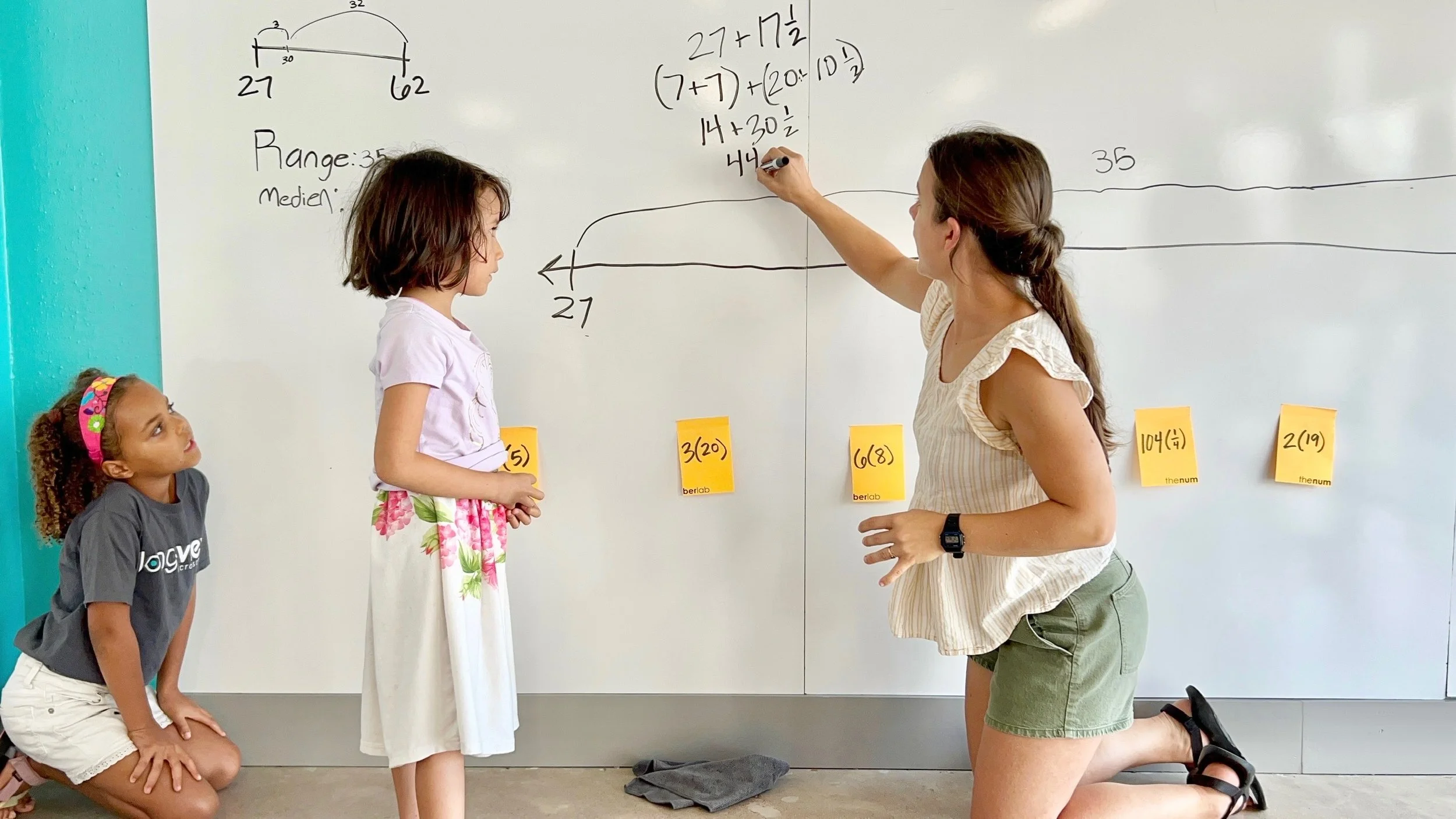Long-View is a transformative education experience.
Long-View Micro School offers 80 kids across 2nd through 8th grade an unparalleled education experience. We are not just interested in “doing school” and checking the boxes of all the trappings of a traditional education. We are interested in making sure that the elementary and middle years of a child’s education set the foundation for a lifetime of learning.
Long-View develops thinking skills, agency, curiosity, and investment in learning. We focus on constructing robust knowledge structures and facilitating the development of conceptual understandings that promote transfer and connections. We support children to be active participants in their own learning by explicitly teaching productive learning dispositions, critical listening, the importance of asking questions, how to take intellectual risks, the importance of participating in discussions, and how to learn within a community.
The culture of Long-View is not built around compliance and behavior management, prominent elements of most schools. Instead, we work to create a learning community. We recognize that all conditions for learning can’t be set by the teacher; kids must make contributions to their own learning. Kids and adults take responsibility for themselves and others. Finally, our philosophy toward homework, in-school learning opportunities, and out-of-school learning opportunities fosters a deep commitment to “driving your own learning.”
We have a focused academic footprint—part of the recipe for high-level learning experiences.
In order to bring this level of academics to our kids, we take a “less is more” approach. Our academic blocks are math, reading, writing, science, and computer science.
We value many subject areas that we don’t directly teach at Long-View, but when schools try to cover every subject area oftentimes they end up with a very fragmented and frenetic day, and the level of richness during academic learning suffers. Focusing on a select number of subjects allows our teaching team to facilitate high-quality intellectual experiences and honor the complexity of the disciplines.
Additionally, academic blocks—math, reading, writing, science, and computer science—are two hours a day. These longer blocks, punctuated by “brain breaks,” support deeper experiences. Effectively, we get more accomplished in fewer (but longer) blocks of time. Academically, we focus on durable learning, critical thinking, and authentic practice within these disciplines. We continuously ask ourselves, “What is the hardest, richest version of this idea and how can we bring it to the kids?”
We learn in flexible “bands” instead of restrictive grade levels.
Long-View learners operate in mixed-age learning groups, which we call “bands.”
Each band typically has a spread of 2-3 grade levels. Try not to think of this philosophy of mixed-age groups within the traditional practice of "the older kids help support the younger kids" or "the ones who understand a topic teach the ones who are struggling." Neither of these represent the philosophy of Long-View. Mixed-age bands allow us to let go of assumptions related to ages and grade levels and ensure all children are stretching toward the highest expectations. We don’t want kids’ learning put in a box, following the thinking “you will only learn 2nd grade math because you are a 2nd grader.” We typically teach towards the high end of the band (and “high end” doesn’t equate with “eldest” every time). There is no artificial “ceiling” on what kids are exposed to at Long-View and this is crucial to their transformation.
Our four bands are created in the beginning of the year and typically have color names (ex. “Indigo Band”). The band operates as a learning community across all subject areas. Bands typically stay intact across the year, but sometimes individual kids are moved during the year, as we are all about flexibility and we make changes as needed. Our kids are on an upwards trajectory and multi-age cohorts promote stronger learning.
Long-View doesn't look like your ordinary school.
When you step into Long-View, it feels creative and casual, and everyone is invested in learning. It’s collaborative. It is not about compliance and routine, but instead about agency and adaptability.
The open, airy, and non-traditional physical environment fosters a feeling of community, where kids are known and where we don’t avoid the problems of co-existence. We believe that the best learning spaces are those that have been designed with everyone in mind, that establish a relationship between the space and the outside world, and that are flexible and can be reinvented.
Our urban location allows us to live out a desire to have “porous” walls and maintain a simple facility. We spend an hour a day at the park for lunch, walk to the university to utilize public resources, and make use of a large creek and grassy meadows for science experiments or poetry writing.
Our daily and weekly schedule supports depth and balance.
From 9:00-2:30, Mondays-Thursday, we are working hard at Long-View.
Unlike many schools, we don't waste time or spend our academic minutes on busy work. We don’t adhere to a rigid schedule of 40-minute subject increments. Most academic blocks are two hours long, and with 2 blocks a day we have an opportunity for deeper learning and the day has a more productive pace.
Additionally, our 4-day weekly schedule is purposeful and though this non-traditional schedule can be a change for families, most find it to be a huge opportunity. Fridays are a time for sports or music lessons, for trips to the museum with friends, for projects based on a kid's passions, a visit to the library and extended time to read, or some needed free time playing outside on a pretty day.

